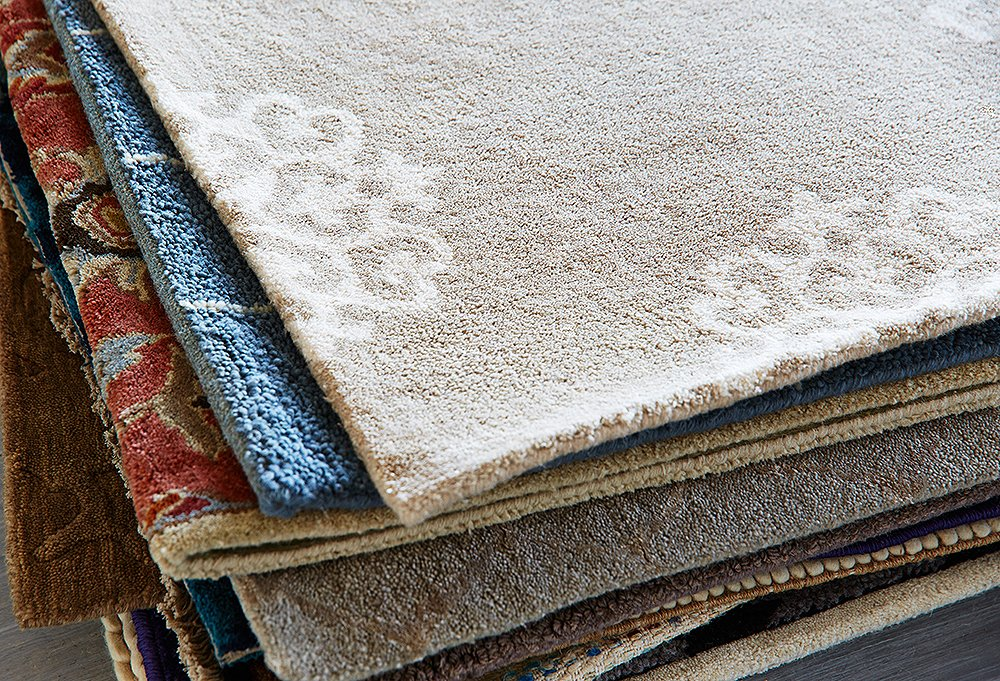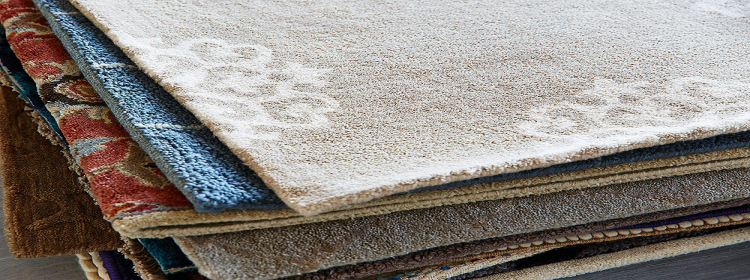High Pile, Low Pile, or Flatweave Rugs – What’s Best for You?
Decorating your new home or restyling an old place is all fun and games until you have to pick a rug.
The task of selecting a rug is meant to be done while keeping various factors under consideration, including the rug material, design, colour, shape, size, style, pattern, and the rug pile.
The trickiest of all, as you might’ve guessed, is choosing the right rug pile. Mess up, and you’re stuck with the wrong type of handmade rug that can make the entire space feel awkward.
What is Rug Pile?
In the rug world, the term “pile” refers to the loops of material that are sewn into the backing of a rug. The height of the loops is the basis on which a rug pile is either labelled as low or high.
To put it simply, the pile of a rug is the raised surface on top of the rug fabric, and it can be dense, lightweight, low, or high depending on the rug material, weaving techniques, length of the fibres, and so on.
Why Does it Matter?
Your rug pile basically comprises your rug and it can affect the woven artifact’s durability, sustainability, as well as its overall feel.
The pile height also effects rug maintenance and how difficult or easy it may be to keep your rug clean.
In general, high-pile rugs can get damaged easily if placed in high-traffic areas, they’re more difficult to clean, but more comfortable and softer as well.
On the other hand, low-pile carpets don’t house much dirt and dust, you can easily wash them at home by following some basic rug cleaning tips, and their fibres don’t get squished by heavy furniture or too much foot traffic. However, these rugs don’t provide as much cushioning as their high-pile equivalents.
There’s also a type of rugs that has no pile at all – flatweave kilims or dhurries. These floor coverings are constructed without any knots. They’re affordable, easy to manage, and can be used from both sides since they don’t have a backing!

How to Choose the Right Rug Pile?
You must’ve read various articles discussing the types of hand-knotted rugs or offering guidance on how to choose the perfect rug shape, but rug pile is something that’s often ignored by buyers.
However, now that you know what a rug pile is and how important it is to choose the right type, you might be wondering:
“How do I decide which rug pile is best for my place?”
Well, here are some factors that you can consider while making a pile decision:
Comfort: If you plan on creating a comfortable floor seating area with a handmade rug, or want something that your kids can play on without getting hurt, a soft, high-pile rug is the best.
Foot-Traffic: For an office, study room, hallways, kitchen, or places that receive a lot of foot traffic, we’d recommend you to go for a low-pile rug featuring dark hues, such as a classic red Bokhara.
Cleaning and Maintenance: Don’t have much time for rug maintenance and daily cleaning? A low-pile rug or flatweave Kilim can be your go to option. Rugs with long fibres tend to trap a lot of dirt and require proper regular care.
Dust and Bacteria: Because high-pile carpets and rugs easily trap dust in them, they might not be a good option for those with dust or pollen allergy.
Décor Style: The pile of a rug can affect its overall appearance and feel, so you might prefer one style over the other depending on the trend or the type of look that you’re creating. For instance, flatweave Kilims can be the perfect choice for Boho Chic décor style. Whereas, for a classier look, you may want to go for a luxuriant-looking Oriental rug featuring a thick pile.
Consider the Furniture: Rugs with long and thick pile are definitely softer and fluffier as compared to the low-pile or flatweave ones. But their long fibres can get crushed or look matted if placed under heavy furniture. So, if you want to place an area rug beneath your dining table, or if your living room sofas are too heavy, invest in low-pile rugs.
Durability and Longevity: If durability is one of your major concerns when buying a rug, know that high-pile carpets may wear off sooner than low-pile ones. Also, rugs that have a high knot density tend to be more durable and stronger than those with loose and easy knots.
High-Pile Rugs
Rugs that have a pile height taller than 1.4” are considered high-pile. These are extremely soft, bouncy, and have a luxurious look.
Also, high-pile rugs are a common choice among home owners who live in cold climatic regions since these floor coverings give off a cosy vibe and can add warmth to any room.
The Pros
Why should you choose a high-pile rug? These can be the reasons:
- Soft and Luxurious: Because of their long fibres, these rugs feel really soft and plush under feet, which is one of the main reasons why homeowners choose them.
- Cosy and Comfortable: During chilly winters, when the cold hard floor becomes unbearable, a fluffy high-pile rug can provide the much-needed warmth. You can place a high-pile floor covering by the side of your bed and start each day with a cosy feeling, or put it near a fireplace to enjoy winter nights in the most comfortable manner.
- Bouncy Feel: Since the knots on these rugs aren’t too dense and the loops are longer, they give a bouncy feel so you can have fun playing games with your toddler.
- Trendy Appearance: Shag or Frieze rugs are often preferred by rug lovers because they appear quite trendy and inviting, all the while providing a luxurious feel that low-pile rugs lack.
The Cons
In some cases, high-piles are not the best choice. Here’s why:
- Costly: If you’re facing budget constraints, a high-pile rug may not serve you well. Since a lot more fabric is used in their making, these rugs are expensive to manufacture and aren’t really affordable for middle-class families.
- Difficult to Clean: Due to their long fibres, high-pile rugs trap in a lot of dirt and dust. Plus, they require to be cleaned by a specific vacuum cleaner that has longer brushes, so the dirt is properly removed. You may also need to get them professionally cleaned once in a while.
- Higher Risk of Allergies: Since long fibres tend to house a lot of dirt and bacteria, these rugs can cause allergies and you may end up sneezing all day long.
- Can Look Matted or Crushed: Bouncy rugs don’t work well in high-traffic areas and their fibres can be easily crushed or flattened if placed under heavy furniture. High-pile rugs can even get permanently damaged if you drag a furniture item over them.
Low-Pile Rugs
Rugs with loops that’re shorter than 1/4” come under the low-pile category. Since their fibres are short, these rugs have a coarser feel and appear more flat than high-pile floor coverings.
However, they’re much denser, highly durable, easier to clean, and great for high traffic areas.
The Pros
Low-pile rugs and carpets come with lots of benefits, including:
- Immensely Durable and Long-Lasting: Low-pile rugs feature denser knots and shorter fibre length. Hence, they don’t wear off too soon and can stay with you for years.
- Affordable Price Tags: If you’re going for a machine-made low-pile rug, price won’t generally be an issue. However, handmade rugs can be a bit more costly, but they’re more durable too, so it would be an investment than expense.
- Easier to Clean: A major advantage of low-pile carpets is that they’re quite easy to maintain. The dirt on these can be effortlessly removed with a regular vacuum cleaner. You can even scrub them in case of stains without worrying about the fibres getting damaged.
- Don’t Flatten Easily: Low-pile rugs are already considerably flat, and since they feature dense knotting, heavy furniture or foot-traffic don’t harm them much. Get a modern rugs in dark colours and you won’t even have to worry about the stains!
- Doesn’t Cause Allergies: If you’re allergic to dust of have a breathing disease such as asthma, a short pile rug can be the perfect décor item.
The Cons
In terms of appearance, low-pile rugs aren’t that appealing as opposed to luxurious high-pile ones. Here’s what makes them not-so-attractive:
- Rough and Coarse: While long fibres are soft and bouncy, short-pile rugs feel very much like the hard floor beneath them. They don’t provide much cushioning, and can sometimes cause rug burns too.
- Don’t Provide Insulation: Compared to the warmth that high pile rugs offer, low pile carpets are way less comfortable and not too cosy.
- Less Charming: Low piles generally don’t look much inviting, and they don’t have the same luxurious charm as high pile rugs.
- Lack Texture: Because of their fibre length, they don’t have a plush texture and are best-suited for places where you won’t be taking your shoes off. For instance, low-pile runner rugs can be a great choice because they won’t get damaged due to foot-traffic, and you’re not likely to sit in a narrow hallway.
Flatweave Rugs
Flatweave rugs are a popular choice for creating a look that’s uniquely traditional, easy to manage, and entirely captivating. The most common types of flatweave rugs – Kilims and Dhurries – are used by a vast majority of homeowners in India, Mexico, and Pakistan.
Why?
Because they’re jam-packed with great features!
The Pros
Handmade high-quality flatweave rugs are the most traditional floor coverings you’d find out there. Here’s why they’re a common pick:
- Variety: The most major advantage of getting flatweave rugs is that you’d have a variety of different styles to choose from. Also, they blend in well with various décor styles and can help create a unique look.
- Affordability: Since the making of flatweave rugs isn’t much laborious or time-taking, they’re way less costly than piled rugs.
- Not a Tripping Hazard: Due to the absence of pile, flatweave rugs won’t become a reason for you to trip and fall.
- Easy to Clean and Maintain: Without a pile, the dirt on these rugs doesn’t go anywhere deep, so you can easily clean them with a vacuum. You can even beat out the dirt from these rugs with a broomstick, or just give them a good shake and the debris would be gone! However, since they don’t hide the dirt, you can’t skip the cleaning part.
- Reversible: No pile means no backing, so the rugs are very much alike from both sides and you can easily flip them over if one side gets dirty.
The Cons
Just like piled rugs, flatweave rugs also come with certain disadvantages, such as:
- Can’t Withstand High Foot-Traffic: The patterns on a flatweave rug are made of weft foundation yarns, so they can get easily damaged by heavy foot-traffic.
- Easy to Get Holes and Pulls: Without any backing, the yarns of a flatweave can be pulled by pet toenails. Plus, heavy furniture or shoe heels can even bore holes in the rug.
- Buckling and Wrinkles: Most flatweave rugs begin to buckle if kept in high-traffic areas. You can use rug padding to avoid this, but again, a thick rug pad can cause structural damage to your flatweave rug.
- Not Soft or Bouncy: If rugs with low pile are coarse, you can easily imagine what a flatweave would feel like under your feet. Honestly, it’s not much different from hard flooring, and definitely not too comfortable to sit on.
Now that you know which rug pile to choose, it’d be easier to find the perfect handmade rug online. Or, you can just get a custom rug designed and created specifically for your living room floor!














